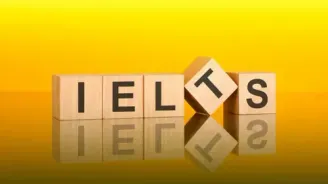The Development of Plastic Reading Passage
The Development of Plastic
Paragraph A
During the nineteenth century, Europe became the birthplace of industrial rubber products, and the material quickly rose to prominence thanks to its many practical applications. Natural rubber was once widely used, but over the twentieth century a variety of new synthetic materials called plastics replaced it. As a chemical consisting of giant molecules bonded together from many smaller, simpler components, rubber is a polymer. The chemical industry produces a wide variety of plastics using the same bonding principle—polymerization.
Paragraph B
In the USA, a competition spurred the creation of the first plastic. In the 1860s, a reward of $10,000 was offered to anyone who could come up with a suitable substitute for ivory in billiard ball production. Ivory supplies were dwindling at the time. John Wesley Hyatt's celluloid substance was the winning entry. Celluloid was created by dissolving cellulose, a plant-based carbohydrate, in a camphor-and-ethanol solution. Knife grips, snap-off cuffs, eyeglasses, and even photographic film were some of the first goods to use this novel material. No motion picture company would have been able to launch towards the tail end of the 19th century if not for celluloid.
Paragraph C
Celluloid is a thermoplastic because it can be repeatedly warmed to soften it and change its form. Leo Baekeland, a Belgian chemist working in the United States, created a new type of plastic in 1907 by triggering a reaction between phenol and formaldehyde. Bakelite was the first of the thermosets' plastics, which can be cast and molded while hot but cannot be softened by heat and molded once they have set; Baekeland gave the material this name. Bakelite was impervious to water, acids, and moderate heat, and it also served as a good insulator. Due to its useful features, it was quickly used in the production of electrical components for automobiles, as well as switches and other domestic things like knife handles.
Paragraph D
The search for more tiny molecules that could be linked together to form polymers was soon undertaken by chemists. Thermoplastic polyethylene was first created in the 1930s by British chemists by polymerizing ethylene gas in a high-temperature, high-pressure environment. By the 1950s, polypropylene had emerged as a viable alternative. Bottles, pipelines, and plastic bags were all manufactured using both. PVC (polyvinyl chloride) is a strong, flame-retardant plastic that was created by substituting a hydrogen atom in ethylene with a chlorine atom, making it ideal for use in pipe and gutter systems. In addition, PVC may be made soft by including different chemicals, making it an acceptable rubber replacement for applications such as watertight apparel. PTFE, or Teflon, was a material that was very similar (polytetrafluoroethylene). As a result of its low coefficient of friction, it was found to be useful in applications such as bearings, rollers, and non-stick cookware. Created in Germany in the 1930s, polystyrene was a transparent plastic widely used in the packaging of food, household goods, and toys. The white, stiff foam known as expanded polystyrene was commonly used for both packing and insulation. Germany is also responsible for the development of polyurethanes, which have since found widespread usage as adhesives, coatings, and, in the form of rigid foams, insulation. All of these items are made from chemicals extracted from crude oil, and as such, share the same chemical components (carbon and hydrogen) as many polymers.
Paragraph E
Also in the 1930s, the first synthetic fiber, nylon, was developed. Wallace Carothers, an American scientist who later worked for the Du Pont Company, came up with the idea. He discovered that two chemicals, hexamethylenediamine, and adipic acid, could combine under certain conditions to make a polymer that could be pushed out of holes, stretched, and weaved like silk. Parachutes for the United States military during World War II were its first application. In the years following World War II, nylon gradually supplanted silk in the production of stockings. Other synthetic fibers followed suit, with Orion, Acrilan, and Terylene joining the nylon family. Most clothing today is constructed from a combination of natural fibers like cotton and wool and man-made fibers that are more durable and require less maintenance.
Paragraph F
Plastic's invincibility is its greatest strength. This feature has many drawbacks, though, as evidenced by the fact that even the most distant islands have beaches filled with plastic bottles that cannot be recycled or broken down. Not only are there many distinct kinds of plastic, but they're typically all used in the same products, making recycling a complex process. To make plastics biodegradable, they can be reinforced with a substance like starch, which is then broken down by microbes. Bottles built from these materials must be kept in the dark so that they don't decompose before they're used, but they can be made to contain other materials that slowly decompose in sunlight.
Also Read: IELTS Reading Tips & Tricks
The Development of Plastic Reading Questions and Answers
Discover exciting and informative IELTS reading answers about The Development of Plastic






